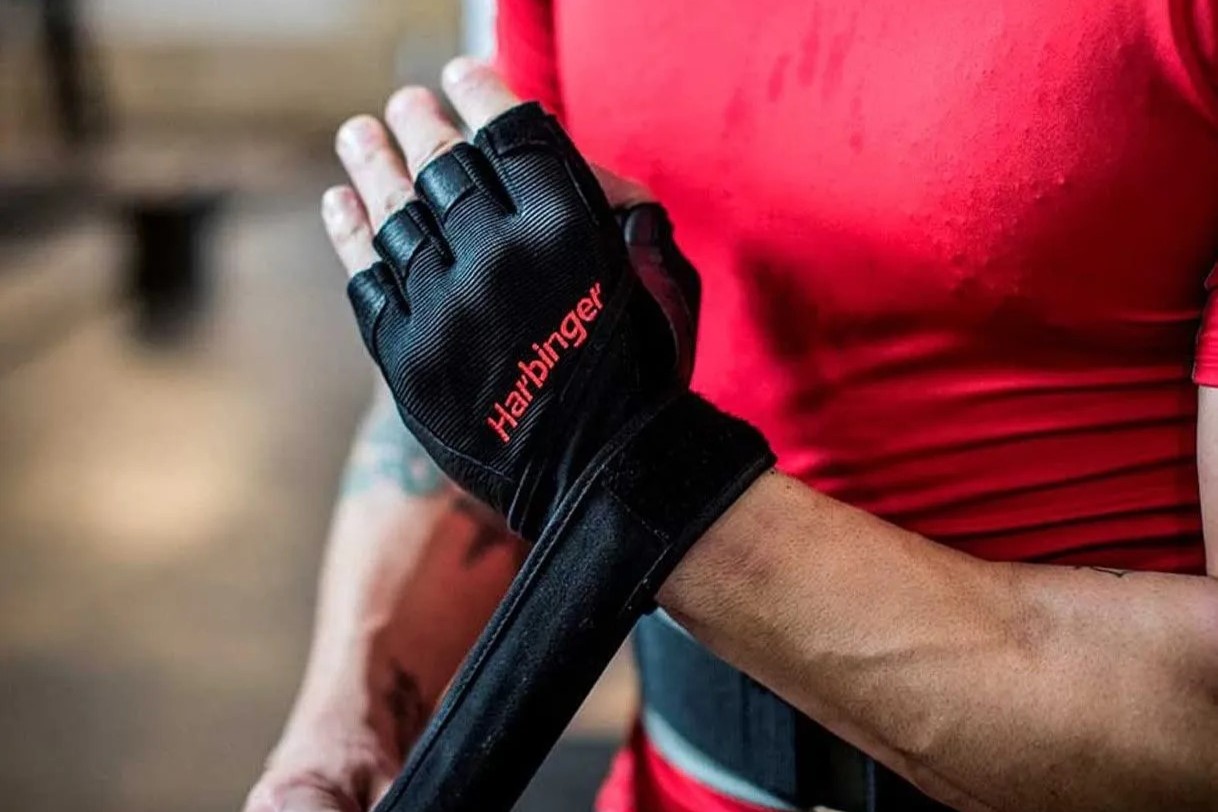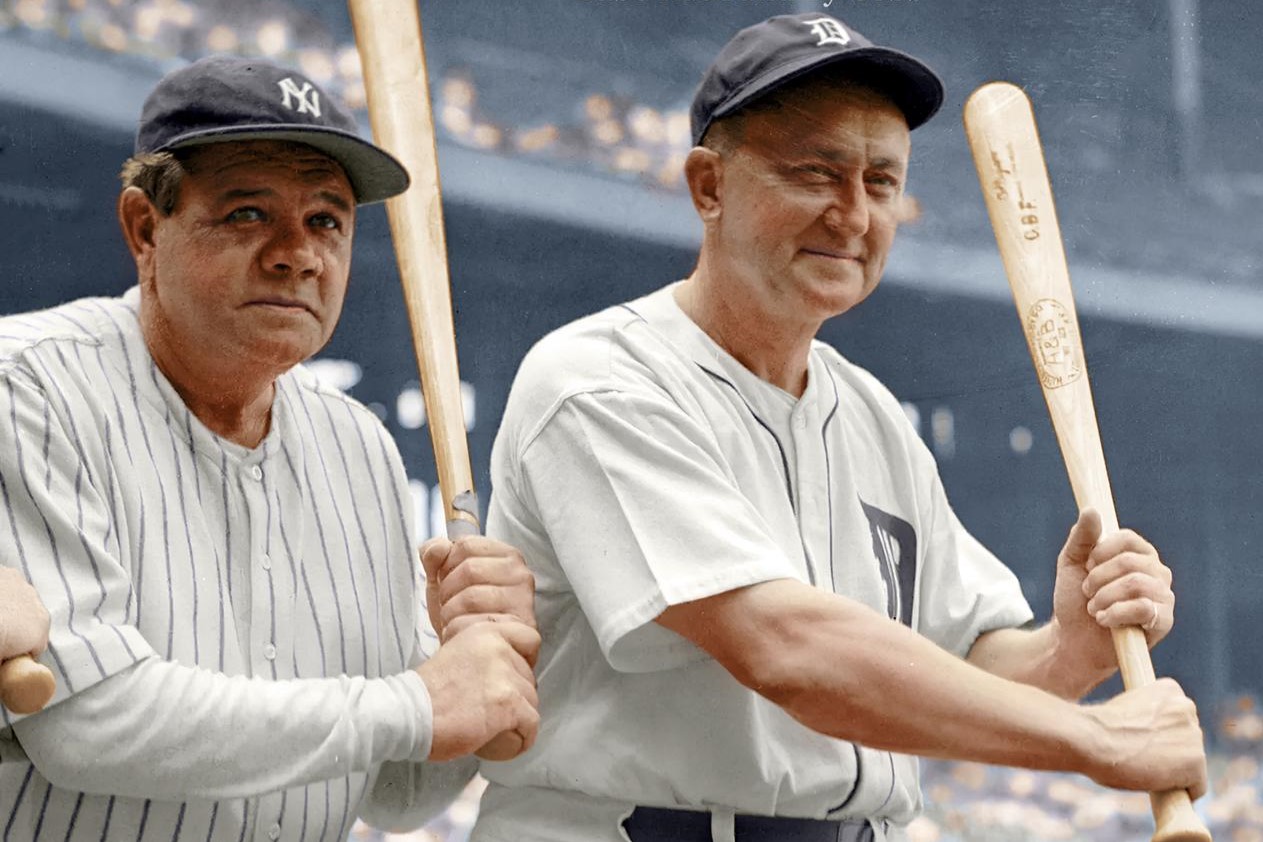

Sports
How To Break In A Baseball Glove
Published: February 25, 2024
Learn the best techniques for breaking in a baseball glove to improve your game. Find expert tips and tricks for sports enthusiasts.
(Many of the links in this article redirect to a specific reviewed product. Your purchase of these products through affiliate links helps to generate commission for Noodls.com, at no extra cost. Learn more)
Table of Contents
Introduction
Breaking in a new baseball glove is an essential rite of passage for any player. Whether you're a seasoned pro or a rookie stepping onto the diamond for the first time, the process of breaking in a baseball glove is crucial for achieving the perfect fit and feel. A well-worn glove molds to the player's hand, providing the comfort and flexibility needed to make game-changing catches and throws.
The art of breaking in a baseball glove goes beyond mere practicality; it's a ritual that connects players to the sport's rich traditions. Each crease and contour in a glove tells a story of countless catches, victories, and defeats. As players embark on the journey of breaking in a new glove, they are not just shaping the leather; they are shaping their own path in the sport.
In this comprehensive guide, we will delve into the step-by-step process of breaking in a baseball glove, from gathering the necessary materials to taking the glove out onto the field for a game of catch. Whether you're a dedicated infielder, outfielder, or catcher, the techniques outlined in this guide will help you achieve the perfect balance of snugness and flexibility in your glove, ensuring that it becomes an extension of your hand on the field.
So, grab your new glove, roll up your sleeves, and get ready to embark on a journey that will not only enhance your performance on the field but also deepen your connection to the timeless traditions of America's favorite pastime. Let's dive into the art of breaking in a baseball glove and unleash its full potential.
Step 1: Gather Your Materials
Before embarking on the journey of breaking in your baseball glove, it's essential to gather the necessary materials. Each item plays a crucial role in preparing the glove for optimal performance and comfort on the field. Here's what you'll need:
1. Baseball Glove Conditioner
A high-quality baseball glove conditioner is the cornerstone of the breaking-in process. Look for a conditioner specifically designed for leather gloves, as it helps soften the leather, making it more pliable and less prone to stiffness. Quality conditioners also protect the glove from drying out and cracking, ensuring its longevity.
2. Mallet or Ball
A mallet or a baseball can be used to help shape the pocket of the glove. The mallet's flat surface allows for targeted pressure application, aiding in the formation of a well-defined pocket. Alternatively, a baseball can be used to achieve a similar effect through repeated impacts.
3. Soft Cloth
A soft, clean cloth is essential for applying the conditioner to the glove. It ensures an even distribution of the conditioner, allowing it to penetrate the leather effectively. Additionally, a cloth can be used to wipe off any excess conditioner, preventing the glove from becoming overly saturated.
4. Glove Wrap or Rubber Bands
To maintain the desired shape of the glove during the breaking-in process, a glove wrap or rubber bands can be used. These tools help secure the glove in the desired position after applying the conditioner, allowing it to conform to the player's hand more effectively.
5. Time and Patience
While not a tangible material, time and patience are invaluable components of the breaking-in process. Breaking in a baseball glove is not an instantaneous task; it requires dedication and a willingness to invest time in shaping the glove to perfection. Patience is key, as the process may take several days or weeks to yield the desired results.
By gathering these materials, you are equipping yourself with the essentials needed to embark on the journey of breaking in your baseball glove. With these tools at your disposal, you are ready to move on to the next step and begin the process of conditioning and shaping your glove for peak performance on the field.
Step 2: Apply Conditioner to the Glove
Applying conditioner to a new baseball glove is a critical step in the breaking-in process. The conditioner serves as a catalyst for softening the leather, making it more supple and receptive to shaping. Here's a detailed look at the process of applying conditioner to the glove:
Choosing the Right Conditioner
Selecting a high-quality baseball glove conditioner is paramount. Look for a product specifically formulated for leather gloves, as it is designed to penetrate the dense fibers of the leather, effectively softening and moisturizing the material. Quality conditioners also contain protective elements that shield the glove from environmental factors, such as heat and moisture, which can cause the leather to dry out and become brittle over time.
Read more: How To Wash A Baseball Cap
Preparing the Glove
Before applying the conditioner, it's essential to ensure that the glove is clean and free of any debris or dirt. Using a soft, clean cloth, gently wipe the surface of the glove to remove any impurities that may hinder the conditioner from fully penetrating the leather. This preparatory step sets the stage for the conditioner to be absorbed evenly, maximizing its effectiveness in softening the leather.
Applying the Conditioner
With the glove clean and ready, apply a small amount of conditioner to the cloth. Using gentle, circular motions, work the conditioner into the leather, ensuring that it is spread evenly across the entire surface of the glove. Pay particular attention to areas that are prone to stiffness, such as the palm and the finger stalls. The conditioner should be applied liberally but not excessively, as over-saturation can lead to a prolonged drying time and potential damage to the leather.
Allowing Absorption
After the conditioner has been applied, allow the glove to sit for a few minutes to enable the leather to absorb the moisturizing elements. This period of absorption is crucial, as it allows the conditioner to penetrate the leather fibers, softening them from within. During this time, the conditioner works its magic, revitalizing the leather and preparing it for the next phase of the breaking-in process.
By following these steps, you are laying the foundation for a well-conditioned baseball glove that is poised to mold to your hand and deliver exceptional performance on the field. With the conditioner applied, the glove is now primed for the next stage of the breaking-in process, where it will be shaped and molded to achieve the perfect fit and feel.
Step 3: Work the Glove
With the conditioner applied, it's time to work the glove to further enhance its flexibility and shape. This step is crucial for molding the glove to fit your hand comfortably while creating a well-defined pocket for secure ball-catching. Here's a detailed guide on how to effectively work the glove:
Flexing and Bending
Begin by gently flexing and bending the glove to loosen up the leather. Focus on the areas that naturally receive the most stress during play, such as the palm and the base of the fingers. Gradually work the leather back and forth, allowing it to yield and stretch. This repetitive motion helps break down the initial stiffness of the glove, making it more pliable and responsive to your hand's movements.
Targeted Pressure
To shape a distinct pocket in the glove, apply targeted pressure to the pocket area. Use a mallet or a baseball to repeatedly strike the pocket, encouraging it to form a concave shape that securely cradles the ball. By concentrating the force in this specific area, you are effectively defining the pocket's contours, ensuring that it is optimally suited for trapping and securing the ball during gameplay.
Finger Stalls and Webbing
Pay special attention to the finger stalls and webbing, as these components play a crucial role in the glove's functionality. Gently work the finger stalls by repeatedly pressing and releasing them, allowing the leather to conform to the shape of your fingers. Similarly, manipulate the webbing to encourage it to mold around the ball, creating a secure and reliable catching surface.
Glove Wrapping
After flexing, bending, and shaping the glove, secure it in the desired position using a glove wrap or rubber bands. This step helps maintain the glove's newly formed shape, allowing it to conform to your hand's contours more effectively. By immobilizing the glove in the desired position, you are facilitating the shaping process, ensuring that the glove adapts to your hand's unique dimensions.
Read more: Shaq Dunks On Schintzius Breaks Backboard
Patience and Persistence
Working the glove is not a one-time task; it requires patience and persistence. Repeat the flexing, bending, and shaping process multiple times, allowing the glove to gradually conform to your hand's shape. Each session of working the glove brings it closer to achieving the ideal fit and feel, so don't rush the process. Embrace the repetitive nature of this step, knowing that each iteration brings the glove closer to its peak performance potential.
By diligently working the glove, you are actively shaping it to become an extension of your hand on the field. This hands-on approach to breaking in a baseball glove ensures that it not only fits comfortably but also enhances your performance, giving you the confidence to make game-changing plays. With the glove worked and shaped to perfection, it's now ready for the next phase of the breaking-in process: repeating the conditioning and working steps to further refine its form and functionality.
Step 4: Repeat the Process
Repetition is the key to achieving the ideal balance of snugness and flexibility in a baseball glove. By repeating the conditioning and working steps, you further refine the glove's form and functionality, ensuring that it becomes a natural extension of your hand on the field.
After the initial conditioning and working of the glove, it's essential to assess its progress. Examine the leather for any signs of stiffness or areas that may require additional attention. If certain areas feel less pliable than others, focus on applying targeted conditioning to those specific areas. This iterative approach allows you to address any lingering stiffness, ensuring that the entire glove achieves uniform flexibility.
Once the additional conditioning is applied, revisit the process of working the glove. Flex, bend, and shape the glove, paying close attention to the areas that received targeted conditioning. By repeating these motions, you encourage the conditioner to penetrate deeper into the leather, further softening and molding it to your hand's contours.
Throughout the repetition of the conditioning and working steps, it's important to monitor the glove's progress. Notice how the leather responds to each iteration, gradually becoming more supple and responsive. As you repeat the process, the glove begins to take on a personalized fit, conforming to the unique nuances of your hand.
Patience is paramount during this phase, as achieving the perfect balance of flexibility and structure takes time. Embrace the repetitive nature of the process, knowing that each cycle brings the glove closer to its optimal state. By committing to the repetition of conditioning and working, you are actively shaping the glove to meet your specific playing style and preferences.
As you repeat the conditioning and working steps, you'll notice the glove's transformation. The once rigid leather begins to yield, forming a defined pocket and conforming to your hand with increasing precision. With each repetition, the glove evolves, shedding its initial stiffness and embracing the suppleness needed for exceptional performance on the field.
By diligently repeating the conditioning and working steps, you are not only breaking in the glove but also forging a deeper connection with it. This iterative process allows you to fine-tune the glove to your exact specifications, ensuring that it becomes a trusted companion in your baseball journey. With the repetition of these essential steps, your glove is poised to deliver unparalleled comfort and performance, ready to accompany you on countless memorable plays and victories on the diamond.
Step 5: Play Catch
After diligently conditioning and shaping your baseball glove, it's time to put it to the test through the age-old tradition of playing catch. This step marks the culmination of the breaking-in process, as it allows you to experience firsthand how the glove performs in a real game scenario.
Playing catch serves as the ultimate validation of your efforts, providing valuable insights into how the glove responds to catching and throwing. As you toss the ball back and forth, pay close attention to how the glove interacts with each catch. Notice the ease with which it envelops the ball, securing it snugly within the pocket you've meticulously shaped. Feel the leather yield and flex, mirroring the movements of your hand as it effortlessly snags the incoming ball.
With each throw, gauge the glove's responsiveness and comfort. Notice how it adapts to your hand's motions, providing a seamless extension of your reach. As you unleash throws, revel in the confidence that your glove offers, knowing that it has been tailored to meet your specific playing style and preferences.
During this pivotal step, take note of any areas that may require further attention. If you detect lingering stiffness or areas that could benefit from additional shaping, consider revisiting the conditioning and working steps to fine-tune the glove's performance. This iterative approach ensures that the glove evolves to meet the demands of your gameplay, becoming a reliable ally in your on-field endeavors.
Playing catch also serves as an opportunity to bond with your glove. As you engage in this timeless practice, a unique connection forms between you and the glove, solidifying its status as an indispensable tool in your baseball journey. Each catch and throw strengthens this bond, infusing the glove with the memories of your plays and victories on the diamond.
Through the act of playing catch, you not only test the glove's functionality but also celebrate the culmination of the breaking-in process. It's a moment of triumph, as you witness the transformation of a new, stiff glove into a supple, responsive partner on the field. Embrace the joy of this experience, knowing that your efforts have yielded a glove that is primed to accompany you on countless memorable plays and victories.
As you conclude the playing catch session, reflect on the journey you've embarked upon to break in your baseball glove. From the initial conditioning to the repetitive shaping, each step has contributed to the glove's evolution, ensuring that it embodies the perfect blend of snugness and flexibility. With the breaking-in process complete, your glove stands as a testament to your dedication and passion for the game, ready to embark on countless adventures on the diamond.
Conclusion
In the world of baseball, breaking in a new glove is more than just a practical necessity; it's a time-honored tradition that connects players to the essence of the sport. As the final step of the breaking-in process, playing catch marks the culmination of the glove's transformation from a stiff, new acquisition to a supple, responsive extension of the player's hand. This ritualistic act not only validates the efforts invested in conditioning and shaping the glove but also serves as a moment of celebration, as players witness the tangible results of their dedication.
The journey of breaking in a baseball glove is a testament to the player's commitment to excellence. From the meticulous application of conditioner to the repetitive flexing and shaping, each step contributes to the glove's evolution, ensuring that it embodies the perfect balance of snugness and flexibility. Through this process, players forge a deep connection with their gloves, infusing them with the memories of countless catches, throws, and victories on the diamond.
As players embark on the timeless tradition of breaking in a new glove, they not only shape the leather but also shape their own path in the sport. The dedication and patience required to break in a glove mirror the virtues essential for success on the field: perseverance, attention to detail, and a relentless pursuit of improvement. This process instills a sense of pride and ownership in the glove, as players witness its transformation from a standard piece of equipment to a personalized tool tailored to their unique playing style.
The act of breaking in a baseball glove transcends mere functionality; it embodies the spirit of the sport itself. It is a nod to the rich traditions and rituals that have defined baseball for generations, connecting players to the timeless legacy of America's favorite pastime. As players step onto the field with their newly broken-in gloves, they carry with them not just a piece of equipment but a symbol of their dedication and love for the game.
In conclusion, the breaking-in process is a labor of love, a journey that transforms a new glove into a trusted companion on the diamond. As players celebrate the completion of this process by playing catch, they honor the traditions of the sport and embrace the evolution of their gloves into personalized, reliable tools. With each catch and throw, the glove becomes more than just equipment; it becomes a vessel for the player's passion, skill, and unwavering commitment to the timeless art of baseball.











